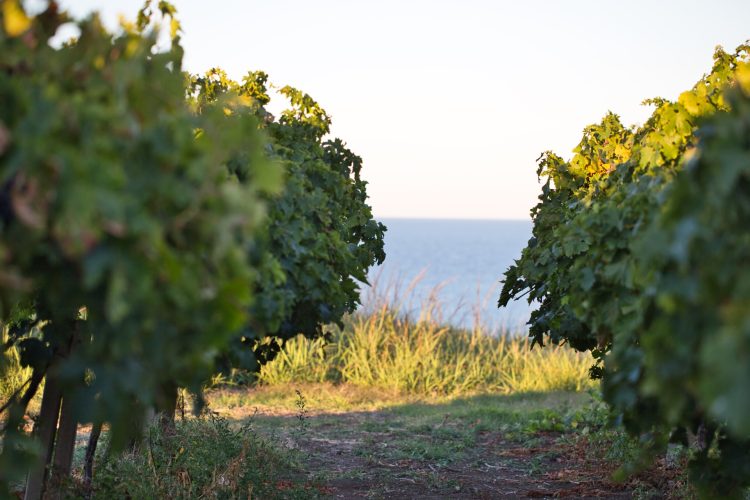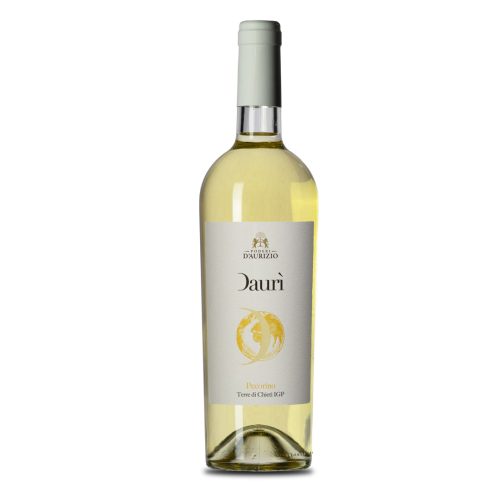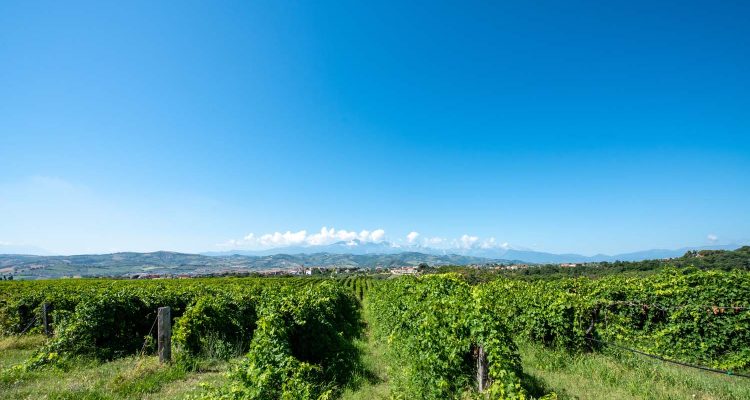We tend to think all the wines in Italy are of ancient origin – but we’d be wrong in a few notable cases. One of them being the lovely Pecorino d’Abruzzo white wine which is just starting to appear in the US.
Pecorino d’Abruzzo wine has notes of white and tropical fruits and a hint of zingy limestone, yet overall it has a gentle, rounded feel on the palate. Producers in this south-eastern region of Italy can produce their wines with either more or less acidity, though they usually also emphasize the grape’s fruity, slightly herbal flavors. The wines pair well with creamy cheese, light appetizers, fish and white meat.
Nothing to do with Pecorino Romano cheese, the white pecorino grape got its name from being grown so high up in the mountains that sheep [pecore in Italian] snacked on them on their way to and from hilly pastures. Abruzzo is a mountainous region east of Rome, bordering the Adriatic Sea.

Though people in the mountain communities of Abruzzo and neighboring regions also used the pecorino grapes for wine, the custom of guiding sheep to and from summer mountain pastures declined from the 1950s on. So as the twentieth century wore on, the pecorino grape was mostly forgotten, left to grow on its own, high up in the hills.
Fortunately, a few wine producers recalled the importance of this white mountain wine before it was lost. They began experimenting with growing this grape in the 1980s and ‘90s, discovering that it does best high on the Abruzzo hills which are composed of clay with limestone. Pecorino d’Abruzzo was finally commercialized as a wine about thirty years ago, in 1996, by the famed Cataldi Madonna winery.
Today, many more wineries produce Pecorino d’Abruzzo, and I was fortunate to be able to sample some when they came through Boston this fall. This is an easy wine to drink, in flavor as well as price. The wines tend to be clear and bright, fermented and aged in neutral containers without any oak influence. It’s also good to know that organic farming is the norm in this region. Here are three wines that stood out to me.
2023 Abruzzo DOC Il Pecorino made with high-elevation grapes by San Lorenzo Vini, a grape-growing family since 1890. The juice is kept cold before and after pressing; fermentation is spontaneous, with natural yeasts. White and yellow fruits abound in aroma and on the palate, and as it warms in the glass there’s a welcome hue of minerality and mountain herbs, with an underlying richness. Balanced and super-easy to sip…and keep on sipping.
2023 Colline Teramane Abruzzo DCO Pecorino Superiore Collevento. This long name means the wine was made in a one of the defined sub-regions of the area. It was produced by Fattoria Giuseppe Savini (founded in 1949) from high altitude grapes grown on clay soil which creates an elegant wine. It’s well balanced, with structure, texture and flavors encased by herbs and white fruits; limestone edginess persists through the finish.
2022 Terre di Chieti Pecorino d’Aurì IGT. Produced by Poderi d’Aurizio with grapes grown on a sandier soil, close to the Adriatic coast. The wine is mildly herbaceous on the nose and palate. Streaks of bright citric limestone run through the soft, white fruit flavors of this nicely-balanced wine.


